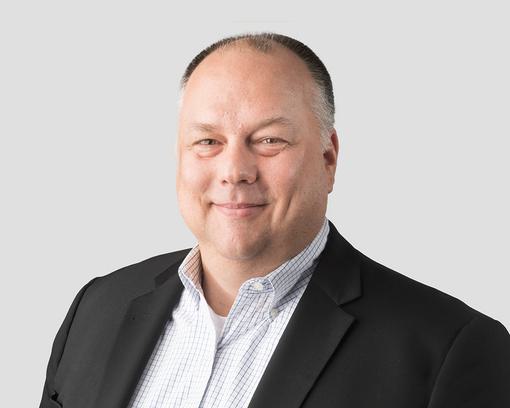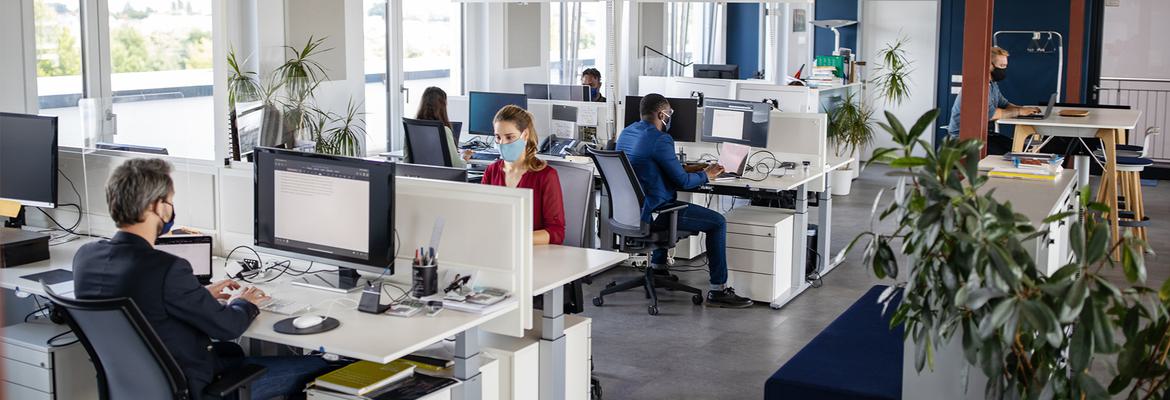Witt O’Brien’s values the insights of renowned industry experts as society faces the outfall of the COVID-19 pandemic. This blog entry highlights the interview on a podcast series entitled PandemicBuzz launched by Witt O’Brien’s Devin Sirmenis, Managing Director Corporate Resilience. We invited Guy Gryspeerdt, who is the Global Head of Business Resilience for Honeywell for a wide-ranging discussion on the company’s approach to managing the impacts of the global pandemic on its business and lessons learned. This conversation takes place as the world moves into a period of the pandemic where glimpses of the finish line are coming into view on the distant horizon, in a grueling 12-month+ race now being run between ‘vaccination’ and ‘virus mutation’.
-----------------------------------------------------
We kicked off Season 3 of our PandemicBuzz podcast with a wide-ranging discussion on building an effective, global resilience program with our guest, Guy Gryspeerdt, VP and Global Head of Business Resilience with Honeywell – an international industrial software company operating in 70 countries with 900 sites with 100,000 employees. Guy painted an interesting and informative picture of how Honeywell is evolving and enhancing resilience company-wide to drive reinvention and transformation after the COVID-19 pandemic. Below are just a few of the great insights he shared.
Creating a shared resilient mindset requires engagement across business lines
At Honeywell, multiple teams, including enterprise risk management, security, IT, cyber, crisis management and business continuity work together to identify and prioritize probable risks. Resilience teams at Honeywell are building strong relationships with global business presidents and site leaders to increase the overall understanding of Honeywell’s risk landscape and align on evolving risks. Resilience teams' partner with the businesses on a shared goal: to make sure they can operate during a crisis event and recover quickly. Genuine intellectual curiosity about the businesses is conveyed. Resilience teams work to understand how, when and where each business operates, and dive deep into exploring why it operates the way it does and what is unique about its success.
Some leaders have to be comfortable wallowing in ambiguity, others have to have a high-level of attention to detail
Honeywell has a good execution and accountability-based culture. One of their core behaviors is ‘think big, make it happen and be courageous.’ At the resilience level, Honeywell needs to continually harness this ‘say-do’ attitude – but in a programmatic, repeatable and scalable way. This goes back to understanding the business, showing how resilience drives value to that particular business and fostering a shared resilience mindset.
In terms of ideal qualities of resilience disciplines, for crisis management, Honeywell benefits from leaders who can be assertive and open minded at the same time. No two crisis events are the same, and you will never have all the information you need before you make decisions. This is the fundamental difference between crisis management and emergency management. With the latter, you could operate to a great extent with a checklist and have a plan for different types of events. With crisis management the variables are too great. There's a real need to be able to ‘wallow in the ambiguity’ and be comfortable with it. Crisis management leaders also must make decisions on minimal information, and at the same time, think through the second and third order of consequences of the event to make the best decision.
At the disaster recovery and business continuity levels, there is an absolute need for in-depth business understanding, and a high degree of discipline to detail to break down the decisions that support each critical operational action. Business continuity team members also need the confidence to have deep, probing risk-based discussions with business leaders to really understand the impact of each probable risk. Ultimately, resilience leaders are business partners and enablers, and must bring risk information and analytics to the table that is more dynamic and easier for other senior leaders to visualize.
“Inputs, Outputs, Outcomes, Impacts…how am I supposed to use that?”
If you consider the four basic pillars of a business: inputs, outputs, outcomes and impacts, resilience practitioners need to talk about resilience in the impacts pillar. Inputs are the people, facilities and technology that produce outputs for a business continuity plan. The outcome is that resilience practitioners are going to minimize impact to the company. The impact is that resilience practitioners are going to enable our businesses to operate and maintain a competitive advantage.
One major challenge is that as professionals we’ve mostly talked about the outputs and the outcomes – and about how many plans and processes we have. When we do talk about impact, we tend to use insider business continuity concepts like business impact analysis (BIA), algorithmic impact assessment (AIA) and maximum tolerable period of disruption (MTPD). Senior leaders are not really interested in these concepts. They want to know how they can continue operations; how they can win in the marketplace; and how they operate in the face of adversity.
Honeywell is changing the way they talk about business impact. This means always working to align resilience language with the day-to-day concerns of our businesses and driving an understanding of the ‘why’ behind resilience. This is how resilience teams drive value to the business and evolve their resilience approach.
Looking beyond the traffic light, to see what lies ahead
Companies that are trying drive a mindset shift towards how risks holistically impact the business need be transparent in how they evaluate their risk management strategies and plans. To achieve a more balanced, dynamic and actionable evaluation, Honeywell is evolving from the ‘traffic light’ action reporting methodology to a continuous improvement model that is analytics driven. The new reporting model tracks progress towards reaching specific goals. In addition to reporting the current state of an action (red/yellow/green) the deeper analysis also allows leadership to understand why it is red and the risk associated with that state. These insights tie back to the leaderships’ discussions of risk tolerance and acceptance, providing a much more complete view of the current state, which in turn, enables better decisions.
We’re living in an increasingly uncertain world, but we have access to an amazing amount of information. Resilience practitioners need to use it the right way and bring it into play as actionable intelligence for the business. We need to provide that intelligence to our leaders at the right time in the right place, so they know what to do and which programs to deploy to effectively mitigate risk. Having the senior leaders on board as a partner on that journey, knowing they see the benefits, will undoubtedly continue to contribute to resilience being a ’One Honeywell’ operation and mission.
Data and simplicity will move resilience forward
Advancing resilience goes back to speaking the language of business – changing the conversation – talking more about bouncing forward from an event and not going back to the way we were. It’s also about using technology and data analytics and insights to provide our businesses with insight from the BIAs and AIAs that they haven’t had before. If we can package the data that sits in BIA software or in a spreadsheet to provide insights and information on high threat risk concentrations, we can drive extra value.
In terms of future direction, there are thoughts that Honeywell may move away from paper-based planning to data driven scenario-based plans. The company has huge amounts of data that resilience practitioners need to bring together and sweep that data to drive insights relevant to specific risks. Resilience practitioners also need to continue to be more agile and flexible, and break down the silos around security, business continuity and disaster recovery.
Lastly, we must challenge ourselves to drive data driven decision making and simplicity. One thing that is certain is that as businesses become more connected and complex, the impacts of seemingly innocuous events around the world will be felt far away. So, as a resilient team, Honeywell is focusing on reducing complexity, especially in times of events. Steve Jobs said ‘simple can be harder than complex’ – so you must work hard to get your thinking clean – to make it simple. It's worth it in the end because once you get there you can move mountains.
-----------------------------------------------------
Please listen to all our PandemicBuzz episodes on one of your favorite platforms:

Devin Sirmenis is a risk and crisis specialist focused on corporate resilience and has served clients for 20 years as a trusted advisor. Devin works with executive leadership at Fortune 500 firms to assess and develop their crisis management programs, train crisis leaders, and stress test the ability to manage an enterprise threatening crisis through simulations. Prior to joining Witt O'Brien's, he led consultant programs at Deloitte, Booz Allen Hamilton and Perot Systems Government Services. Devin pairs his years of client experience with continuing education and has completed Harvard Kennedy School's Crisis Leadership Program and holds a Change Management Advanced Practitioner certification from Georgetown University McDonough School of Business.
